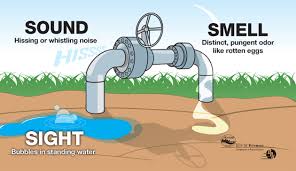By: Joe Adams
Your home is more than just a shelter—it’s an investment. Protecting your home’s exterior not only ensures its longevity but also enhances its curb appeal and value. From harsh weather conditions to general wear and tear, your home’s exterior faces various challenges. Fortunately, there are proactive steps you can take to safeguard it. In this blog post, we will explore the five best things you can do to protect the exterior of your home.
- Regular Maintenance: Performing regular maintenance is crucial for preserving the integrity of your home’s exterior. This includes inspecting for any signs of damage, such as cracks, peeling paint, or loose siding. Promptly address these issues by repairing or replacing damaged materials. Regularly clean your home’s exterior, including the roof, gutters, and windows, to prevent the buildup of dirt, debris, and mildew. By staying vigilant and addressing small problems early on, you can prevent them from escalating into more significant and costly repairs.
- Weatherproofing: Weatherproofing your home is an effective way to protect it from the elements. Start by applying a weather-resistant coating to your exterior walls to shield them from rain, snow, and sunlight. Seal any gaps or cracks in the siding, windows, and doors to prevent water infiltration and air leaks. Install storm shutters or impact-resistant windows to protect against high winds and flying debris during severe weather events. Additionally, ensure that your roof is in good condition, with intact shingles and proper insulation to withstand rain, wind, and extreme temperatures
- Proper Drainage: Effective drainage is essential for preventing water damage to your home’s exterior. Poorly managed water can seep into the foundation, causing structural issues and mold growth. Ensure that your gutters and downspouts are clear of debris and functioning properly, directing water away from your home’s foundation. Grade the landscaping around your home to slope away from the foundation, preventing water from pooling near the walls. Consider installing a French drain or a sump pump system if you live in an area prone to excessive rain or have poor soil drainage.
- Pest Prevention: Protecting your home’s exterior involves safeguarding it against pests, such as termites, ants, or rodents. Regularly inspect the perimeter of your home for any signs of pest activity, such as chewed wood or droppings. Seal any cracks or gaps that could serve as entry points for pests. Keep your outdoor areas clean and well-maintained, removing any potential nesting sites, such as piles of wood or debris. Consider professional pest control services to prevent infestations and protect your home from potential damage.
- Proper Landscaping: Landscaping not only enhances the aesthetic appeal of your home but also serves as a protective barrier. Strategically placed trees and shrubs can provide shade, reducing the impact of harsh sunlight on your home’s exterior. Ensure that trees are trimmed and pruned regularly to prevent branches from damaging your roof or siding during storms. Avoid planting vegetation too close to the foundation, as the roots can cause structural damage. Lastly, regularly water and fertilize your lawn to promote healthy growth and prevent soil erosion.
Protecting the exterior of your home is essential for its long-term durability, value, and visual appeal. By following these five best practices—regular maintenance, weatherproofing, proper drainage, pest prevention, and proper landscaping—you can effectively shield your home from the elements and potential damage. Remember, investing in preventive measures today can save you from costly repairs down the road. So, take the necessary steps to protect your home and enjoy peace of mind knowing that it will stand strong for years to come.




